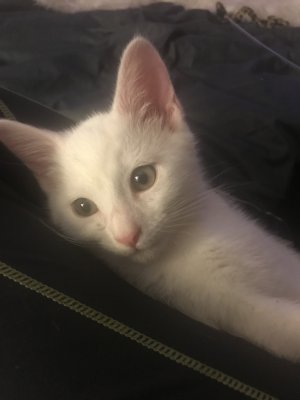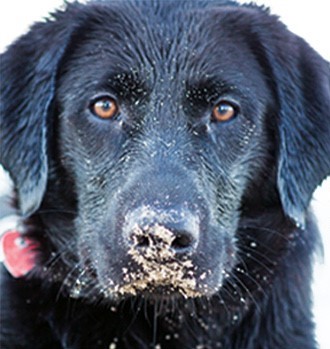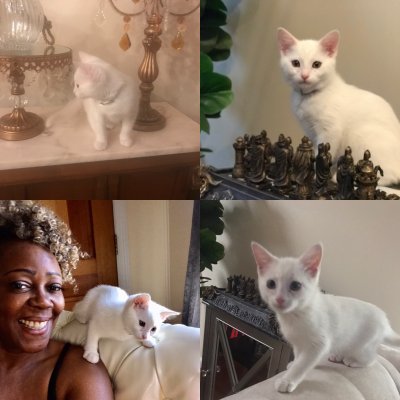- Joined
- Jun 27, 2020
- Messages
- 22
- Purraise
- 32
I got my baby through a pet group on FB. I love her so much! I love looking at her and cuddling. Can you tell me which breed or mixture she is? I’m curious. She has one dark gray spot on her head, other than that, she’s all white. As a kitten she’s cuddler who follows me around.
Attachments
-
1.1 MB Views: 129









